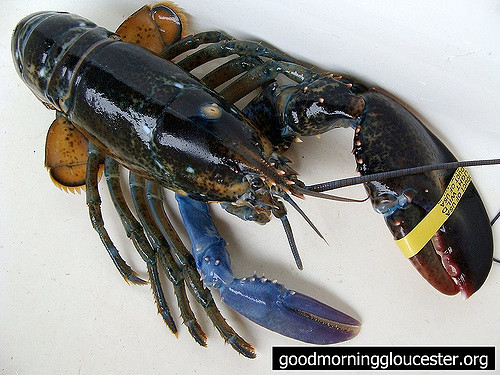We all learned back in high school biology how some animals, the lower animals we were usually told, were capable of regenerating a significant portion of their body if they should happen to lose it. A Starfish who had lost one of its arms and regrew it was often used as an example of this power of regeneration. All living creatures possess some ability to regenerate tissue to some degree, after all, if you trip and skin your knee on the sidewalk doesn’t your skin heal itself in time.

Other species of invertebrates are also known for seemingly amazing powers of regeneration. Animals like the hydra and flatworms can literally be cut in half and regenerate into two complete individuals. Among the arthropods those species that can regenerate most easily are those that continually molt like the crustaceans. I know this for a fact because I once had a crawfish in my fish tank who got into an argument with a catfish and completely lost one of its claws. It took two molts but eventually the crawfish was completely healed!

Regeneration among the vertebrates is more limited but there are many species of lizard that can lose their tail, usually to an attacking predator, and regrow a brand new one. The group of vertebrates that possess the greatest power of regeneration however are the amphibian salamanders and newts. One species in particular that have long been studied are the axolotl, a threatened species whose only habitat is a lake near Mexico City. The axolotl in fact can completely regenerate not only their tails but entire limbs, their jaw, the retina of their eyes and even a portion of their heart!

Axolotls are fascinating creatures not only because of their regenerative abilities but also because unlike other amphibians they never completely metamorphose into an air breathing creature but retain their water breathing gills throughout their lives. This retention of juvenal characteristics into maturity is technically known as neoteny and scientists would very much like to know is whether the two curious characteristics of neoteny and regeneration could actually be related.

In an effort to learn the axolotl’s secrets Doctor Randal Voss at the University of Kentucky has succeeded in mapping the animal’s entire DNA genome. Now many species of animals have had their DNA sequenced over the last few years but the axolotl is once again remarkable in possessing 32 billion base pairs split into 14 chromosomes. That’s fully ten times as many DNA pairs as is in the human genome and getting all of those genes in the correct order is a very complicated task.
Even though Dr. Voss and his co-author Jeramiah Smith are still assembling the axolotl’s genome they hope to soon begin the work of identifying which specific genes are responsible for the animal’s remarkable tissue regeneration abilities. While the day when human beings can regenerate body parts lost in accidents or due to disease may be years away thanks to the complete sequencing of the axolotl’s genome we can now actually see the road ahead.

Quick Post Script: Free Science Fiction!!!
I just came across a very interesting website that is offering a free collection of science fiction stories, all in electronic format ready for download. The collection is called “Everything Change Volume II” and is being offered by Arizona State University. The collection comes with a forward by noted SF writer Kim Stanley Robinson, whose novel 2312 I reviewed in my post of 26 September 2018. Click on the link below to be taken to the website.
https://climateimagination.asu.edu/everything-change-vol-2/

All of the stories in the collection follow the theme of the effect of climate change on future societies, a theme that is central to many of Kim Stanley Robinson’s own works. The stories themselves are written by new authors but the chance to acquire some free science fiction is certainly something worth looking into!

I spent a lot of time to locate something such
as this
Thanks for the comment and come back soon!
Bob L